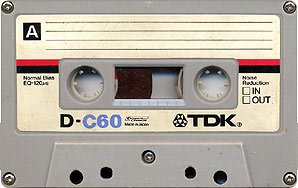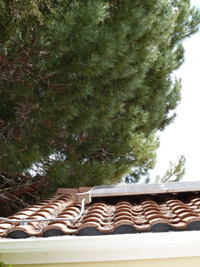Should I Replace String Inverter
Should I Replace String Inverter with a Micro-inverter?
 Remember Cassette Tapes?
Remember Cassette Tapes?
It’s incredible how fast technology evolves all around us. Cell phones, television, computers, our cars are all changing so fast and that also includes solar panels, inverters and the racking system. Depending on the age of your current inverter, it’s always a good idea to see what else is available on the market.
Here are 6 considerations to keep in mind before you pick your next inverter:
Warranty – if the burned out unit is still under warranty, you’re in luck! You can get a replacement so long as you can get your installer to come out and replace the unit. If it’s out of warranty, take a look at the new warranties available. Micro-inverters come with upwards of 25 years whereas the string inverters are less unless you purchase the extended warranty.
Trees Shading the Panels Happens Slowly Over Time
Vegetation – of course trees and bushes grow. Before you know it, that young tree you planted is now towering over the house and casting shadows on your array. Shading hurts string inverters more than micro-inverters. If cutting back your tree is difficult, then consider micro-inverters or a string inverter which has optimizers that mitigate shading.
Fire Safety – micro-inverters convert DC voltage to AC which is then backfed to your house’s main service panel via wires encased in conduit on your roof. These operate at 240 volts AC whereas string inverters pull up to 600 volts DC voltage. In normal operating mode, these systems are safe but when a fire happens, firefighters are leery of solar pv and want some method of rapid system shutdown.
Rapid Shutdown – provisions for shutting down a solar system within 10 seconds have been written into the National Electric Code (NEC) 2014 but this code set has not yet been accepted in all city/county jurisdictions throughout the United States. String inverters must have additional equipment installed to comply with these new safety regulations but all micro-inverters comply out of the box. Newer string inverters with the DC optimizers are also another option. Expect NEC 2014 to be fully adopted by 2017.
System Downtime – because string inverters control all the panels that are connected, a problem affects all of the production for that inverter. It is more critical to fix the inverter and get it back online producing power. In a micro-inverter system, if one unit went bad, the amount of lost power is not as dramatic (its only one panel) and this buys you time to get it fixed.
Replacement Effort – of course it’s cheaper to swap your old inverter with a similar unit, assuming there isn’t a lot of extra wiring (there shouldn’t be). Installing new micro-inverters means removing all the panels from your roof and installing the micro-inverters and special wiring. However, removing panels means you can also do roof maintenance and racking maintenance. For systems older than 10 years, its time for a maintenance inspection to ensure power production for the next decade,
Everyone has different budgets and needs when considering maintenance work. The important thing is to get it done! Nothing worse than having paid full price for a system that is working at half capacity or not working at all!


